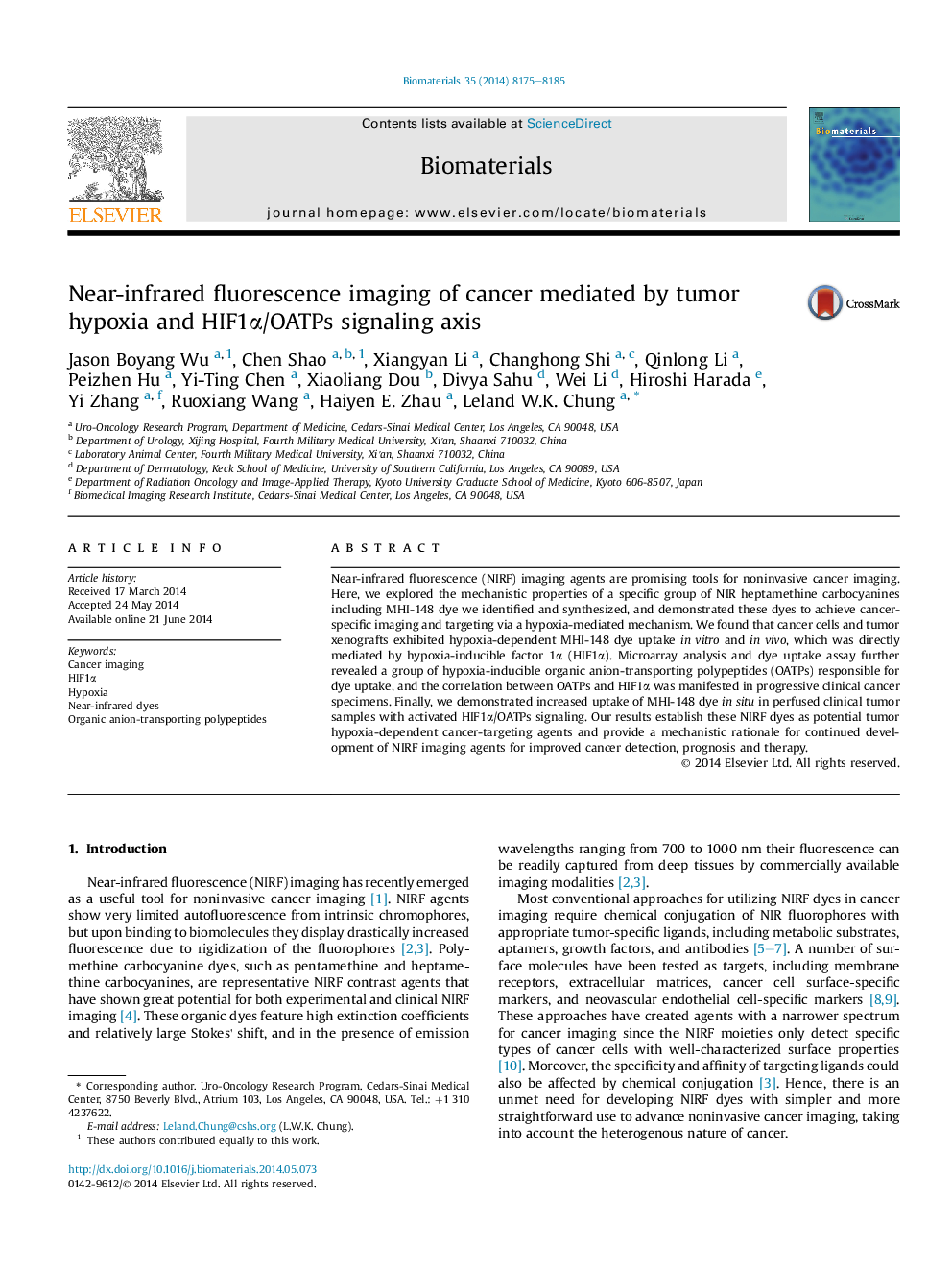| Article ID | Journal | Published Year | Pages | File Type |
|---|---|---|---|---|
| 5900 | Biomaterials | 2014 | 11 Pages |
Near-infrared fluorescence (NIRF) imaging agents are promising tools for noninvasive cancer imaging. Here, we explored the mechanistic properties of a specific group of NIR heptamethine carbocyanines including MHI-148 dye we identified and synthesized, and demonstrated these dyes to achieve cancer-specific imaging and targeting via a hypoxia-mediated mechanism. We found that cancer cells and tumor xenografts exhibited hypoxia-dependent MHI-148 dye uptake in vitro and in vivo, which was directly mediated by hypoxia-inducible factor 1α (HIF1α). Microarray analysis and dye uptake assay further revealed a group of hypoxia-inducible organic anion-transporting polypeptides (OATPs) responsible for dye uptake, and the correlation between OATPs and HIF1α was manifested in progressive clinical cancer specimens. Finally, we demonstrated increased uptake of MHI-148 dye in situ in perfused clinical tumor samples with activated HIF1α/OATPs signaling. Our results establish these NIRF dyes as potential tumor hypoxia-dependent cancer-targeting agents and provide a mechanistic rationale for continued development of NIRF imaging agents for improved cancer detection, prognosis and therapy.
